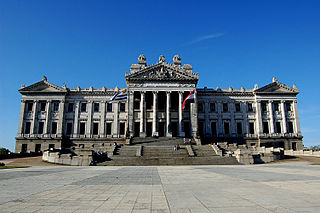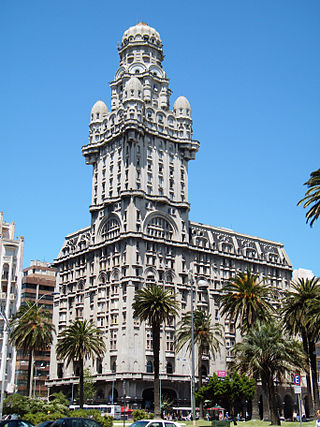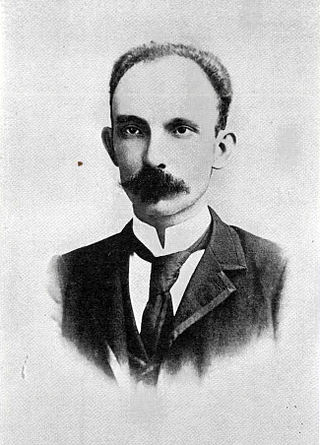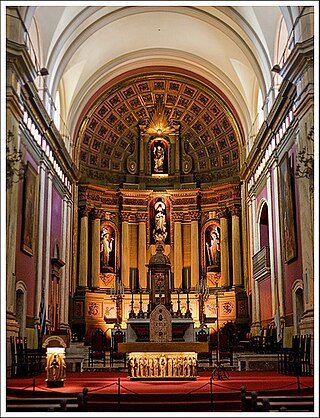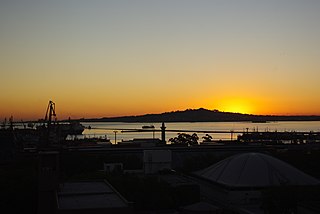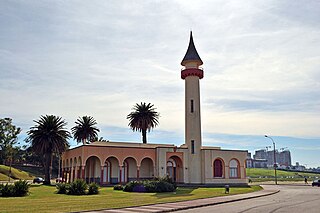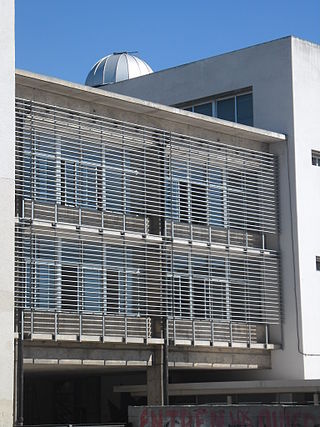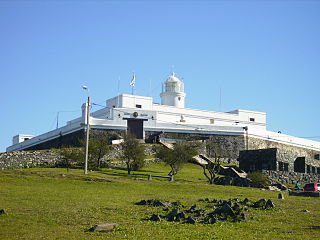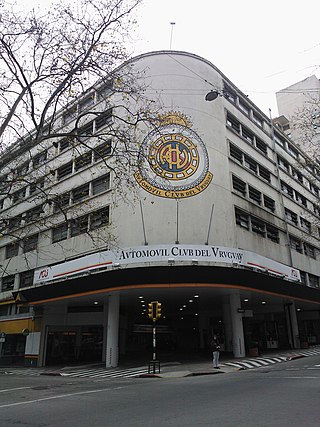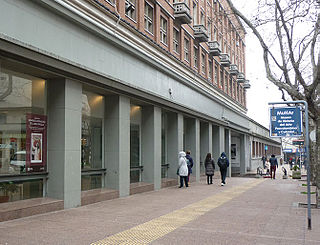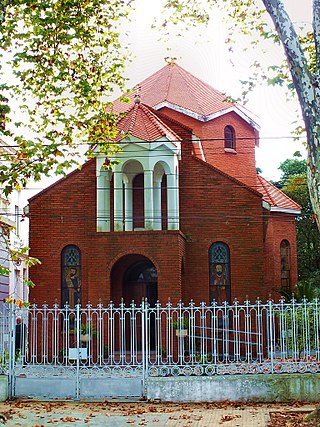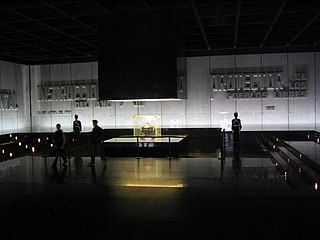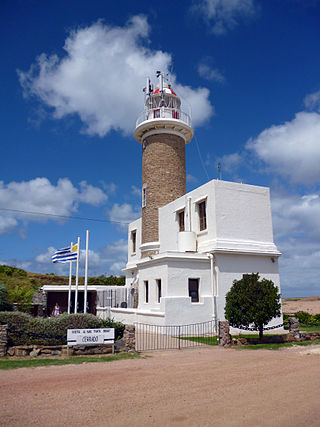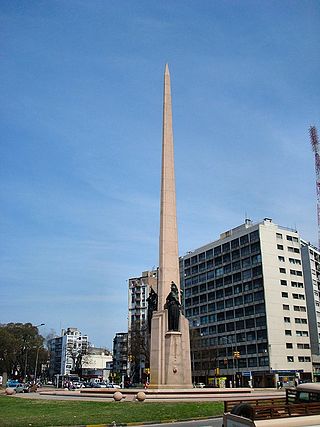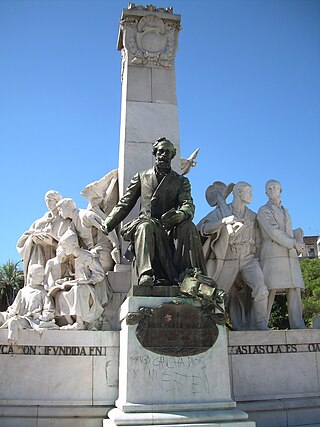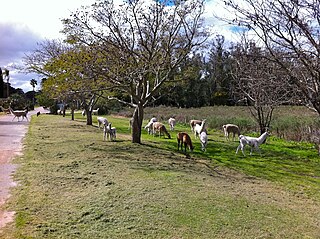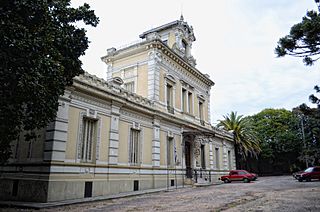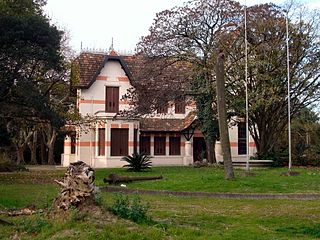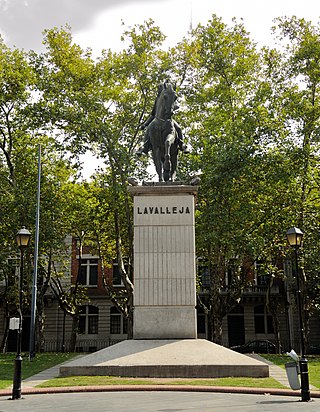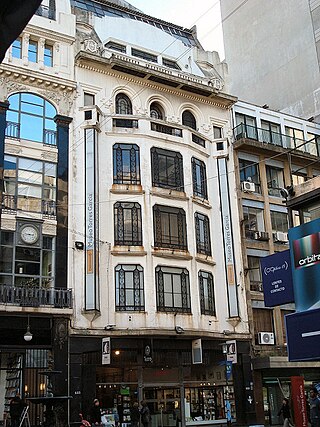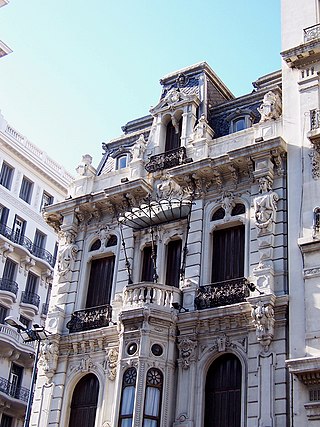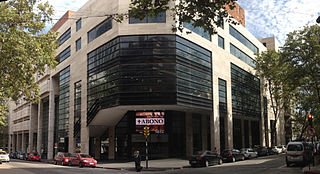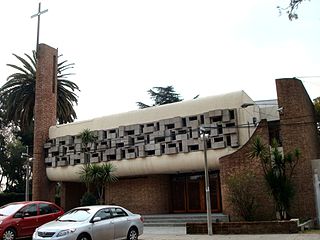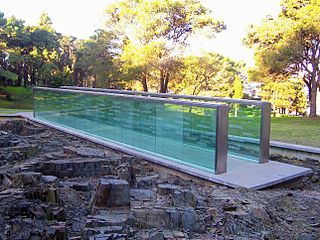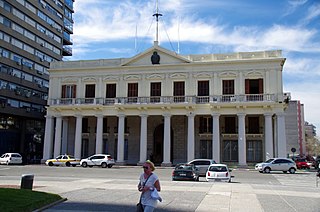33 Sights in Montevideo, Uruguay (with Map and Images)
Legend
Premium Sights
Book tickets, guided tours and activities in Montevideo.
Guided Free Walking Tours
Book free guided walking tours in Montevideo.
Welcome to your journey through the most beautiful sights in Montevideo, Uruguay! Whether you want to discover the city's historical treasures or experience its modern highlights, you'll find everything your heart desires here. Be inspired by our selection and plan your unforgettable adventure in Montevideo. Dive into the diversity of this fascinating city and discover everything it has to offer.
Sightseeing Tours in MontevideoActivities in MontevideoThe Legislative Palace of Uruguay is a monumental building, meeting place of the General Assembly of Uruguay, and the seat of the legislative branch of the Uruguayan government. It is located in the Aguada neighborhood of Montevideo.
2. Palacio Salvo
Palacio Salvo is a building at the intersection of 18 de Julio Avenue and Plaza Independencia in Montevideo, Uruguay. It was designed by the architect Mario Palanti, an Italian immigrant living in Buenos Aires, who used a similar design for his Palacio Barolo in Buenos Aires, Argentina. Finished in 1928, Palacio Salvo stands 100 m (330 ft) high with the antenna included. It was the tallest building in Latin America for a brief period.
3. José Martí
José Julián Martí Pérez was a Cuban nationalist, poet, philosopher, essayist, journalist, translator, professor, and publisher, who is considered a Cuban national hero because of his role in the liberation of his country from Spain. He was also an important figure in Latin American literature. He was very politically active and is considered an important philosopher and political theorist. Through his writings and political activity, he became a symbol of Cuba's bid for independence from the Spanish Empire in the 19th century, and is referred to as the "Apostle of Cuban Independence". From adolescence on, he dedicated his life to the promotion of liberty, political independence for Cuba, and intellectual independence for all Spanish Americans; his death was used as a cry for Cuban independence from Spain by both the Cuban revolutionaries and those Cubans previously reluctant to start a revolt.
4. Catedral Metropolitana
The Montevideo Metropolitan Cathedral is the main Roman Catholic church of Montevideo, and seat of its archdiocese. It is located right in front of the Cabildo across Constitution Square, in the neighbourhood of Ciudad Vieja.
5. Zoológico Villa Dolores
The Villa Dolores Zoo, officially called the Pereira Rossell Park Municipal Zoological Garden, was a zoological park more than a century old located in the Villa Dolores neighborhood of the Uruguayan capital, the city of Montevideo. In an area of 7 hectares, it housed about 550 animals, both of Uruguayan fauna and of other origins, surrounded by gardens with about 650 trees and shrubs. During its first century, it was visited by a total of 61 million people. Adjacent to it, and on the same property, is the Germán Barbato Surveyor Municipal Planetarium, inaugurated on February 11, 1955.
6. Cerro de Montevideo
The Cerro de Montevideo is located next to the city of Montevideo and the coast of the bay of Montevideo, in Uruguay. With an altitude of 132 m above sea level, it was the place chosen by the Spanish soldier Bruno Mauricio de Zabala for the installation of a surveillance post in the port of Montevideo against maritime invasions. In 1802 a lighthouse was inaugurated at its summit to guide navigators entering the port. In 1809 the construction of the General Artigas Fortress began to protect the lighthouse that was completed in 1811, in 1939 after a building restoration it ceased to function as a military fortress to be transformed into the General Artigas Museum.
7. Museo Oceanográfico
The Dámaso Antonio Larrañaga Zoological Museum, also known as the Oceanographic Museum, is a zoological museum in Montevideo located on the promenade of the Buceo neighborhood. It is named in honor of Dámaso Antonio Larrañaga, a renowned Uruguayan naturalist.
8. Centro de Campo de Fútbol de los Pocitos
Estadio Pocitos was a multi-use stadium located in the Pocitos district of Montevideo, Uruguay. The stadium, owned by C.A. Peñarol, was mainly used for football matches from 1921 to 1933. It was demolished later in the 1930s when Peñarol started to play in the Estadio Centenario as its home field, and additionally due to the increasing urbanisation of Montevideo.
9. Observatorio del Instituto de Profesores Artigas
The Astronomical Observatory of the Artigas Institute of Teachers is located in the La Aguada neighborhood in Montevideo, in the upper part of the building of the Artigas Institute of Teachers (IPA), an institution belonging to the Education Training Council, in charge of providing teacher training.
Wikipedia: Observatorio del Instituto de Profesores Artigas (ES)
10. Museo Pedagógico José Pedro Varela
The José Pedro Varela Pedagogical Museum deals with the educational and pedagogical life of Uruguay, as well as the Valerian reform. It is located in the surroundings of Plaza Cagancha in Montevideo.
11. Fortaleza General Artigas
The Fortaleza del Cerro, also known as Fortaleza General Artigas, is a fortress situated in Montevideo, Uruguay overlooking the Bay of Montevideo. It belongs to the barrio of Casabó, at the west of Villa del Cerro. It holds a dominant position on the highest hill of the department of Montevideo with an altitude of 134 meters above sea level, on the opposite side of the bay. Its function was to defend the population of Montevideo and its port, on the río de la Plata. Governor Francisco Javier de Elío ordered construction in 1809 and it was completed in 1839; this was the last Spanish fort built in Uruguay. It has housed the Military Museum since 1916.
12. Museo del Automóvil Club del Uruguay
The Eduardo Iglesias Automobile Museum is a museum in the city of Montevideo dependent on the Automobile Club of Uruguay, it is located on Colonia Street at the corner of Yi, inside the building of the Central Service Station.
Wikipedia: Museo del Automóvil Eduardo Iglesias (ES), Website
13. Museo de Historia del Arte
The Art History Museum is a didactic museum that exhibits various original pieces as well as replicas of different cultures and regions. It is located in the west wing of the Municipal Palace, in the center of Montevideo.
14. Armenian Catholic Church
The Cathedral of Our Lady of Bzommar is the cathedral church of the Armenian Catholic Church in Prado (Montevideo), Uruguay as Co-cathedral of Armenian Catholic Apostolic Exarchate of Latin America and Mexico.
15. Mausoleo a José Gervasio Artigas
The Artigas Mausoleum is a monument to Uruguayan hero José Artigas, located in Plaza Independencia, in the neighbourhood of Ciudad Vieja, Montevideo. It opened in 1977. Artigas's remains are kept in an underground room underneath the statue. The monument is guarded by two traditional guards called "Blandengues de Artigas".
16. Faro de Punta Carretas
Punta Brava Lighthouse, also known as Punta Carretas Lighthouse, is a lighthouse in Punta Carretas, Montevideo, Uruguay. It was erected in 1876. The lighthouse has a height of 21 metres and its light reaches 15 nautical miles away, with a flash every ten seconds. In 1962, the lighthouse became electric. The lighthouse is important for guiding boats into the Banco Inglés, Buceo Port or the entrance of the Santa Lucía River, west of Montevideo city.
17. Obelisco a los Constituyentes de 1830
The Obelisk of Montevideo, officially Obelisk to the Constituents of 1830 is a monument created by sculptor José Luis Zorrilla de San Martín (1891-1975). It is a three-sided obelisk made of granite, 40 metres (130 ft) tall with three bronze statues on its sides, representing "Law", "Liberty" and "Force". It has a hexagonal water fountain around it with six spheres on its outer circumference. It is located at the intersection of 18 de Julio and Artigas Boulevard avenues, in Montevideo, at the entrance of the Parque Batlle area. It was built in 1930 to celebrate the 100th anniversary of the first Constitution of Uruguay and is an homage to the participants of the General Assembly of the first Constitution.
18. Monumento a José Pedro Varela
The Monument to José Pedro Varela is located in Montevideo, Uruguay. It is a tribute to the reformer of education in Uruguayan public schools. It was designed by the Spanish sculptor Miguel Blay (1866-1914) and inaugurated on December 14, 1918.
19. Zoo Parque Lecocq
Parque Lecocq is a nature reserve northwest of Montevideo, Uruguay, near the town of Santiago Vázquez. It houses mammals and birds and protects flora and pursues/supports breeding programs. It is adjacent to protected wetlands.
20. Memorial de los estudiantes
The Memorial monument of the students is a reminder of six Uruguayans who disappeared during the civic-military dictatorship in Uruguay (1973-1985) who were students of the Dámaso Antonio Larrañaga High School.
21. National Museum of Anthropology
The National Museum of Anthropology of Uruguay is a state museum dedicated to anthropology, it is located on Avenida de las Instrucciones near Millán Avenue in the city of Montevideo, capital of Uruguay.
Wikipedia: Museo Nacional de Antropología (Uruguay) (ES), Website
22. Puerta de la Ciudadela
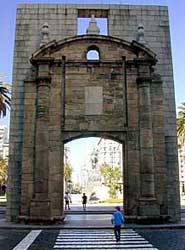
Puerta de la Ciudadela is one of the few remaining parts of the wall that surrounded the oldest part of the city of Montevideo, the citadel, which was torn down in 1829.This drawbridge over a moat was built in 1745 as the only entrance to the city. It is located by Plaza Independencia, in Ciudad Vieja.
23. Casa Quinta de Luis Alberto de Herrera
Museo de la Casa de Luis Alberto de Herrera (translation: House Museum of Luis Alberto de Herrera) is a museum in the Brazo Oriental barrio of Montevideo, Uruguay. The street in which the house is situated, somewhat set back from the road, is now known as Avenida Dr. Luis Alberto de Herrera. It is surrounded by a park designed by landscape architect Charles Racine.
24. Plaza de los Treinta Y Tres
The Plaza de los Treinta y Tres is a park located in the Cordón neighborhood of Montevideo. Popularly known as 'Plaza de los Bomberos' owes its name to the fact that the Centennial Fire Brigade Barracks is located in front of it. It is one of the busiest green spaces in the area, being surrounded by Magallanes, Minas, Colonia streets and 18 de Julio Avenue, in the Cordón neighborhood.
25. Museo Torres García
The Museo Torres García is located in the historic Ciudad Vieja of Montevideo where unusual portraits of historical icons and cubist paintings akin to Picasso's paintings, painted by Joaquín Torres García are exhibited. The museum was established by Manolita Piña Torres, the widow of Torres Garcia after his death in 1949 who also set up the García Torres Foundation, a private non-profit organization which organizes the paintings, drawings, original writings, archives, objects and furniture designed by the painter as well as the photographs, magazines and publications related to him.
26. Monumento al Gaucho
The gaucho monument is an equestrian sculpture in bronze on a pink granite pedestal, made by the Uruguay from the city of Montevideo, and was declared a historical monument by decree of the Uruguayan Executive Power on September 8, 1976.
27. Museos del Gaucho y de la Moneda
El Museo del Gaucho y la Moneda es un museo en uruguayo dedicado al rescate cultural e histórico del país. Dicha institución surge a iniciativa del Directorio del Banco de la República Oriental del Uruguay.
28. Auditorio Nacional Adela Reta
The National Auditorium of Sodre Dr. Adela Reta is a venue located in Montevideo, Uruguay. It is named after the lawyer, former minister and president of the Official Service of Broadcasting, Television and Entertainment, Adela Reta (1921–2001).
29. Museo Nacional de Historia Natural
The National Museum of Natural History in Montevideo is a natural history museum in Uruguay. It opened in 1838, and is the oldest scientific institution in Uruguay and one of the oldest natural history collections in the world. The museum's first permanent exhibition space is at Miguelete 1825—the former Miguelete Prison—and the scientific collections, library and administrative offices are at Calle 25 de Mayo 582 in the Old City.
Wikipedia: National Museum of Natural History, Uruguay (EN), Website
30. Iglesia Evangélica Armenia
The Armenian Evangelical Church is an Armenian Evangelical temple in the neighbourhood of Brazo Oriental, Montevideo. It constitutes the headquarters of this Church for Uruguay, the institution being a member of the Federation of the Evangelical Churches of Uruguay, which is affiliated with the Commission on World Mission and Evangelism of the World Council of Churches.
31. Memorial a los Detenidos Desaparecidos
The Memorial in Remembrance of the Disappeared Detainees, also called the Memorial of the Disappeared, is a memorial dedicated to the Disappeared Detainees of Uruguay. It is located in the Carlos Vaz Ferreira Park, on the southern slope of the Cerro de Montevideo, it is integrated in its central part by two glass walls where 174 names are inscribed, supported by a geometric cement structure that allows the natural rock to be seen, on the side.
Wikipedia: Memorial en Recordación de los Detenidos Desaparecidos (ES)
32. Cannabis Museum
The Montevideo Cannabis Museum opened in December 2016, inspired by the legalization of cannabis in Uruguay in 2013. Some of the collection came from the Hash, Marihuana & Hemp Museum in Amsterdam. And some of it came from Hempstead Project Heart in San Rafael, California, an organization dedicated to the legalization of hemp in the United States.
33. Government House Museum
The Government House Museum is a museum dedicated to the history of the heads of state of Uruguay and their respective governments, its collection preserves much of the democratic history of the country. It is located inside the Estévez Palace, the historic Government House of Uruguay.
Share
How likely are you to recommend us?
Disclaimer Please be aware of your surroundings and do not enter private property. We are not liable for any damages that occur during the tours.
